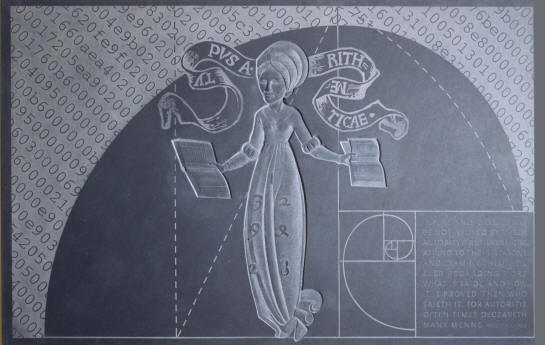Hand-cut, sand blasted and hand carved
Welsh slate
This wall piece, measuring 4 x 6 ft,
celebrates the work and the life of Robert Recorde born in
Tenby, Wales about 1512 and who was the writer of the first
series of mathematics texts in the English language.
This piece of work arises out of the
belief that fundamental proportional systems are common to
both the sciences and the visual arts. In addition, the
depiction of ‘equivalents’ are key elements in its design.
The book,
The Whetstone of Witte,
by Recorde published in 1557, about algebra was the first
book ever to use the ‘=’ sign to denote equality. As Recorde
put it ‘to avoide the tedious repetition of these woordes:
is equalle to: I will sette as I doe often in woorke use, a
paire of paralleles, or Gemowe [twin, as in gemini] lines of
one lengthe, thus: =, bicause noe 2 thynges, can be moare
equalle.’ With the help of this innovation he was able to
express equations in purely symbolic form.
The design of the work was a collaboration with the Computer
Science Department. The central figure of Arithmetic has
been processed via the computer and displayed in the
background as an equivalent image in a series of letters
and numbers. The quotation in the bottom right hand corner
by Recorde explicitly demonstrates his consideration given
to the problems of learning and teaching.

